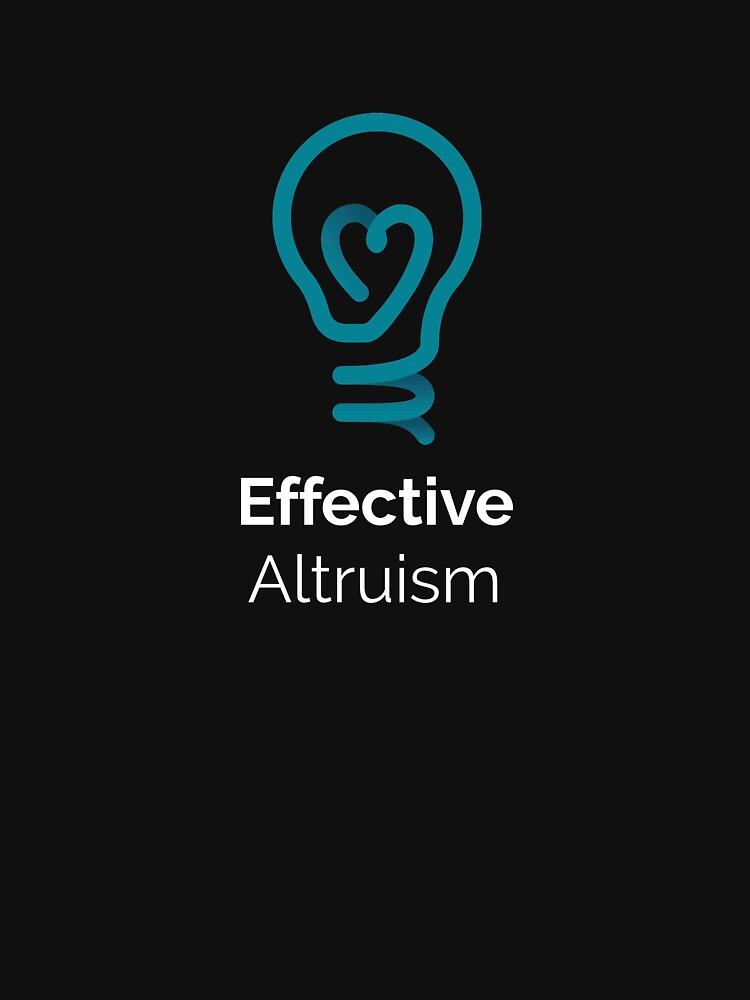The march of time has a peculiar talent: It brings into focus the gradual yet inevitable demise of certain concepts and strategies. Today, nestled within the cadence of progress, stands “Effective Altruism”, gasping for relevance. As we find ourselves amidst the increasing complexities of a global society—with each tick of the clock showcasing an ever-tightening weave of interconnected issues—we pause for a moment’s reflection to delve into the slow, undeniable unraveling of this once steadfast approach to charitable giving. Yet, let’s not herald this as a requiem for Effective Altruism but rather an autopsy that hopes to disentangle its beautiful intentions from the knot of its impracticalities. Welcome, to our exploration of the twilight moments of Effective Altruism.
Table of Contents
- Unwrapping the Current State of Effective Altruism
- Exploring the Reasons behind the Decline of Effective Altruism
- The Unanticipated Consequences of Failing Altruistic Practices
- Recommendations to Revitalize the Essence of Effective Altruism
- Innovative Approaches to Breathe Life into the Concept of Effective Altruism
- Future Outlook

Unwrapping the Current State of Effective Altruism
Effective Altruism has been core to many philanthropic endeavors, blending rational actions with generous intent. However, in recent times, assessment of the movement reveals a disturbing trend. The philosophical concept is seemingly losing steam. But why?
Firstly, it’s crucial to understand that Effective Altruism hinges on a simple concept – making the world a better place. It aims to channel resources towards the most impactful causes, ensuring every cent creates real, tangible change. However, this simple concept can become incredibly complex when introduced in the real world.
- Philanthropic Paralysis: The desire to have an impact can lead to indecision. An abundance of worthy causes induces a sort of paralysis. People end up doing nothing out of fear of doing the wrong thing.
- Maximization Misunderstanding: The focus on maximising philanthropic impact often overlooks the human factor. Realistically, not everyone can adopt an all-or-nothing approach to giving.
- Long-Term Deterrence: For effective altruism to work, long-term commitment is critical. However, many donors prefer to see immediate impact, deterring them from causes with far-off benefits.
In a data-driven society, Effective Altruism at its core is a desirable movement. But, its application needs considerable rethinking. This implies understanding it not as a strict rule set, but as a philosophical guide to achieve the best we can with the resources we have.
| Challenge | Potential Solution |
|---|---|
| Philanthropic Paralysis | Provide donor guidance and transparency about impact |
| Maximization Misunderstanding | Encourage a balance of small, medium and large donations |
| Long-Term Deterrence | Create awareness about causes with far-reaching impacts |

Exploring the Reasons behind the Decline of Effective Altruism
The movement of Effective Altruism surged as a crucial topic within global conversations and academic circles, touted as the finest marriage of empathy and pragmatism. Built on the principle of maximizing the impact of charitable giving, Effective Altruism has, nonetheless, seen a decline in recent years. This devolution can be traced back to various causes.
The first point of contention is the inherent elitism within the Effective Altruism movement. Critics argue that this philosophy is fundamentally high-minded and off-putting, appealing primarily to exceptionally wealthy benefactors and academically inclined people. It indirectly paints other forms of giving as inefficient or insufficient, leading to a backlash from those engaged in more traditional forms of generosity.
Further, the movement has been accused of over-simplifying complex problems. Effective Altruism often promulgates the idea of a “golden bullet” solution to global issues: Find the most cost-effective charity, and all our problems will be serious and sorted. Issues like systemic racism, gender inequality, and climate change are often sidelines as they are difficult to quantify in dollars and cents.
Lastly, the movement’s focus on quantifiable outcomes might lead to neglecting the importance of local knowledge and cultural nuances. Within the Effective Altruism movement, there is often an over-emphasis on global charities, relegating local charities and causes to lower value. This approach can overlook the essential grass-root developments necessary for long-term impact. To illustrate this point, a table represents some global causes and their typical funding, as opposed to local causes.
| Global Causes | Typical Funding |
|---|---|
| Malaria prevention | $1,000,000 |
| De-worming projects | $750,000 |
| Local Causes | Typical Funding |
|---|---|
| Community development | $10,000 |
| Education programs | $5,000 |

The Unanticipated Consequences of Failing Altruistic Practices
Effective Altruism advocates argue for the necessity of gleaning and distributing resources based on competence and efficacy. They insist that the greatest impact can be made by aligning our charitable endeavors with empirically proven, economically efficient strategies. However, this model of heartless metrics can, unfortunately, lead to some unforeseen drawbacks.
The complete reliance on quantifiable results often undervalues the beauty of small, local actions that make an immediate difference to people’s lives. People tend to judge success based on tangible results rather than their genuine influence and compassion. Thus, adopting this perspective can steer us away from empathy, the very foundation of altruism. Impersonal charity can wreak havoc on the humanistic approach to philanthropy. Several unintended consequences are:
- Ineffectiveness in addressing root causes: High-impact focused Altruism often overlooks addressing systemic issues like social injustice, inequality, and discrimination.
- Diminisment of Personal Connection: The focus on large-scale, data-driven charities can diminish the interpersonal connections that make giving rewarding and meaningful.
- Discouragement: This approach can discourage people not affluent enough to donate significant monetary amounts, invalidating their smaller, but meaningful, contributions.
| Charitable Trend | Implication |
|---|---|
| Preference for organisations with proven records | Emerging altruistic initiatives hampered |
| Overemphasis on scalability | Ignores small-scale impact and possibilities |
| Data-driven decision-making | Lack of firsthand emotional connection with causes |
It is crucial to recognise these potential pitfalls of disregarding the human element in charitable organizations and practices. Although effective Altruism prides itself on its rationality and efficiency, its cold calculative approach poses considerable risks. We need to remember that altruism at its heart should stem from love and care for others and not just dry, finite numbers. After all, it’s not just about doing good, but enabling others to feel and experience it too.

Recommendations to Revitalize the Essence of Effective Altruism
Effective altruism, a philosophy and social movement, focuses on the usage of evidence and reason to determine the most effective and feasible ways of improving the world. However, lately, the essence of this noble movement seems to lose its sheen due to various reasons. Hence, it is high time we address these concerns and provide suitable recommendations revive it.
Understand and Address Limitations: Tracing the problems of a social movement, numerous complex issues often surface, and one has got to face them head-on. Effective altruism is no exception to this.
- Lack of Diversity: This issue is pertinent to understand the wide range of human experiences and perspectives. Steps should be taken to encourage membership across different races, genders, and socio-economic backgrounds.
- Increased Professionality: While encouraging efficiency and professionalism is key to any movement, overemphasis on it can estrange the voluntary and empathetic essence of the movement.
Inclusion of a Broader Perspective: Simply targeting high impact opportunities might ride the movement of its essence. It’s crucial to take into consideration those with lower impact opportunities, too. They significantly affect society’s most vulnerable and marginalized sections.
| Effective Altruism Aspects | Recommendations |
|---|---|
| Global Prioritization | Promote equal focus on local and global causes. |
| Promotion of Certain Carrers | Value all forms of contributions. |
| Narrow Concept of Impact | Adopt a more holistic view of impact assessment. |
Promotion of Community Engagement: Foster a community environment where everyone feels a sense of belonging and value. Plan programs and activities that keep members actively engaged and connected. Also, provide a safe space for members to voice their opinions and concerns. This promotes transparency and stimulates meaningful interactions within the community.

Innovative Approaches to Breathe Life into the Concept of Effective Altruism
Effective Altruism is an advocate of individual actions having a positive impact on the globe and its challenges. However, critics contend that it paradoxically disparages the value of life and marginalizes the vulnerable. The death of effective altruism refers to the degradation of its core philosophy, making the following transformative ideologies necessary to revitalize it.
- Modernization of the Utilitarian Beliefs: As a refreshing method to effective altruism, modernizing the utilitarian concepts can call for new beginnings. The crux of this idea is to utilize resources to the fullest potential, avoiding waste that often leads to lost opportunities. Authorities can look at technological advancements to improve strategic aid distribution, making lasting change through effective altruism.
- Egalitarian Redistribution: A more democratic and fair distribution of resources can replace the display of partiality as seen in effective altruism. This approach paves the way for a more responsible and humane form of altruism, free from biases and targeted towards anticipated challenges like the climate change.
A revival of effective altruism can be fostered by exploring other innovative strategies. Notably termed as the “causal diversity”, this philosophy emphasizes the need to address a variety of causes rather than fixating on a singular problem. Causal diversity encourages a range of solutions which may not be deskbound to the most extreme global issues.
The worth of effective altruism also lies in its potential for expected value reasoning. This analytical technique considers the long-term outcomes of one’s actions rather than focusing on immediate results. Furthermore, by integrating the concept of “strategic cause selection”, effective altruism can be evolved to direct resources where they are most likely to make an impact, re-energizing its principles and outlook.
Future Outlook
In conclusion, while the deaths of effective altruism may have caused setbacks and challenges, it is important to remember the valuable lessons that can be learned from these experiences. As we continue to strive towards making the world a better place through impactful giving and actions, let us honor the legacy of those who have passed and use their stories to propel us forward in our mission. Let us continue to question, innovate, and adapt, always keeping in mind the ultimate goal of creating a more compassionate and equitable world for all. The deaths of effective altruism may have left a void, but it is up to us to fill it with renewed determination and purpose.



